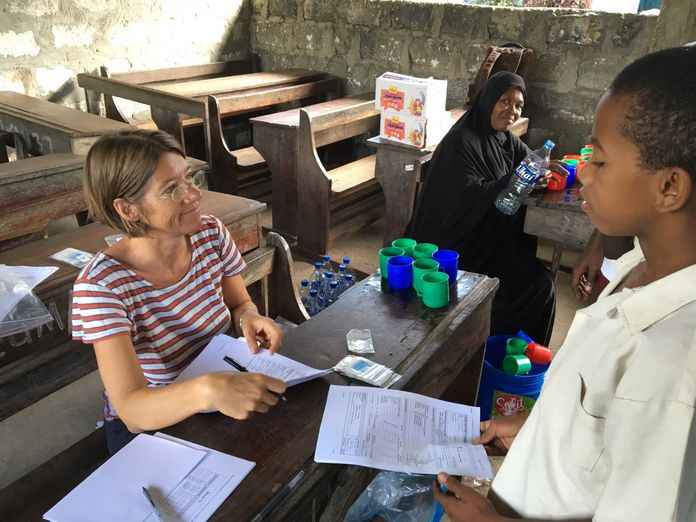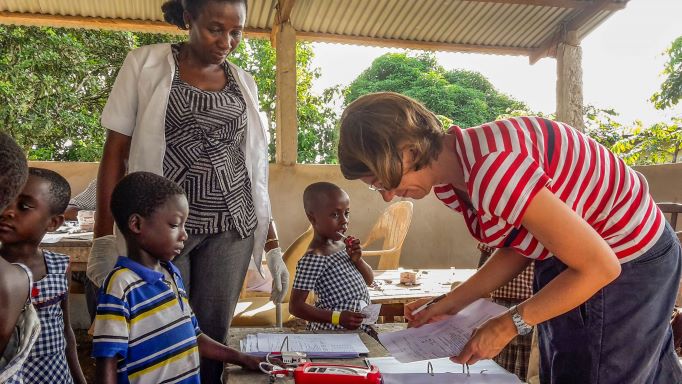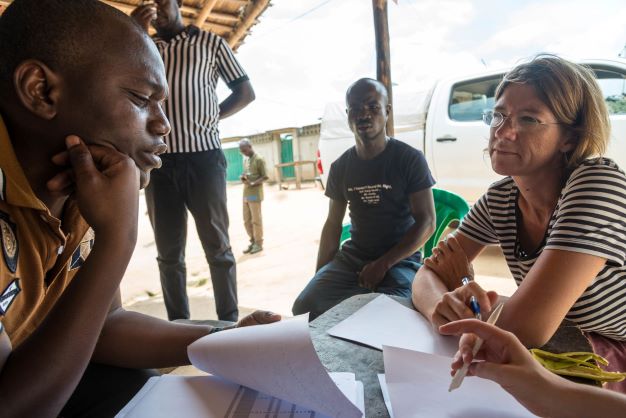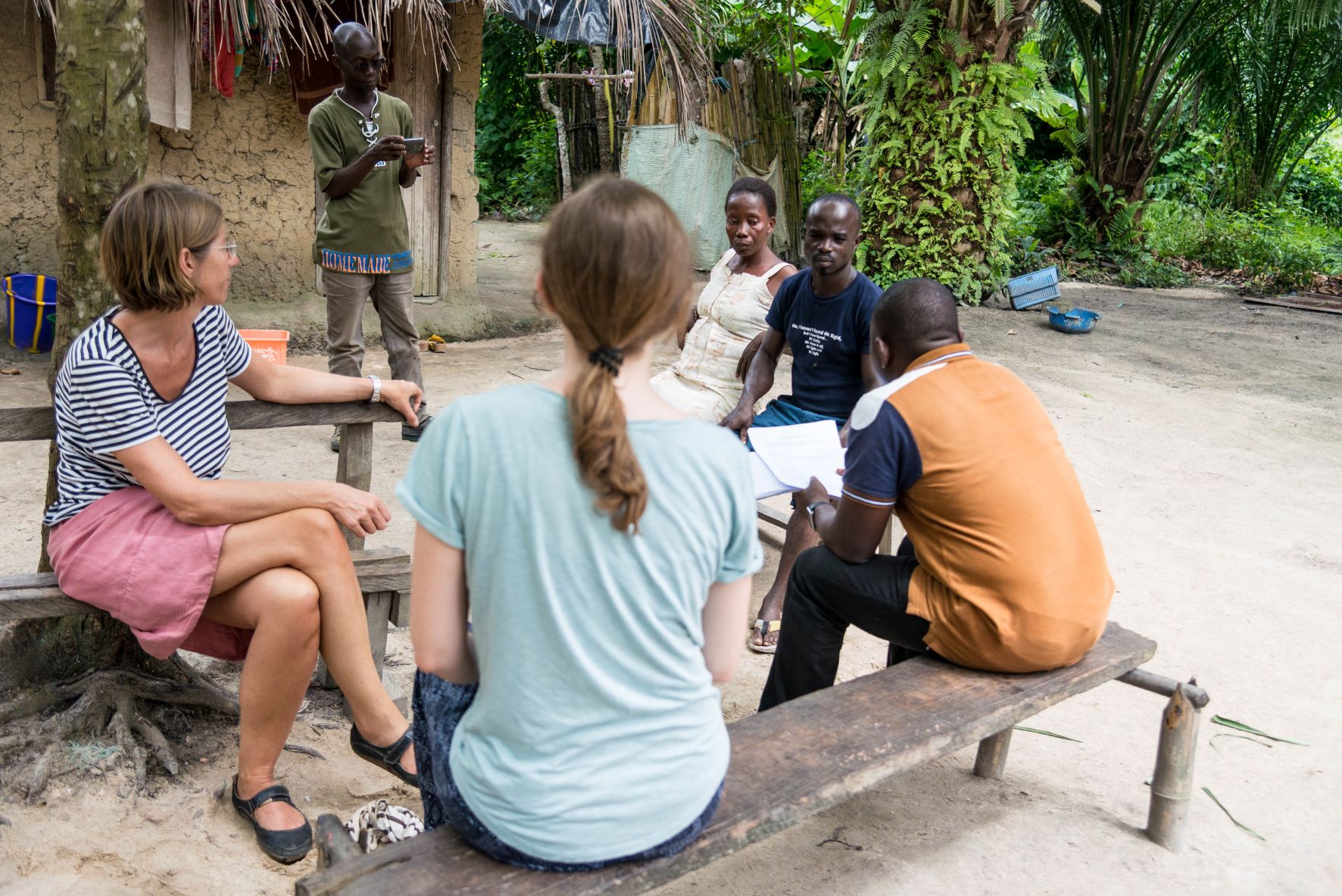
The young Jennifer Keiser grew up in Munich, Germany, and followed both her grandfather (a chemist) and her older sister (medicine) into a life of science. While studying in high school, she worked part-time in a pharmacy, and became fascinated by medicinal drugs and their structure and function. “Rather than become a medical doctor, I thought pharmacy would offer the most rewarding career for me”, Keiser told The Lancet Infectious Diseases. Today, she is head of the Helminth Drug Development Unit at the Swiss Tropical and Public Health Institute (Swiss TPH), an associated institute of the University of Basel, in Switzerland.
After completing her pharmacy degree at the University of Basel, Keiser believed she would move into the pharmaceutical industry. However, a trip to Tanzania in 1993 changed her life forever. “What I saw there were people struggling not only with an HIV epidemic, but a whole range of other infectious diseases disrupting their lives. When I returned to Switzerland, it inspired me to do my PhD in tropical medicine, studying human African trypanosomiasis at Swiss TPH.” Indeed, Swiss TPH has been the place she has called home for most of her career, focusing on both the development of new drugs for helminth infections, and the better targeting of existing treatments and strategies.
Keiser's early career saw both herself and her husband (epidemiologist Jürg Utzinger, the current director of Swiss TPH) undertake postdoctoral training at Princeton University, NJ, USA. During this period from 2000–2003, the couple had their two children. Upon returning to Switzerland, Keiser again considered moving into big pharma, but the successful postdoctoral work in Princeton, focusing mostly on malaria and helminthiases, triggered her decision to stay in academia, supported by the acquisition of several personal career development grants at Swiss TPH. The then Director suggested she re-energise the institute's previous research programme into helminth infections.
“Swiss TPH already had long-standing connections with other institutes in Côte d’Ivoire, Tanzania, and Laos, so that is where much of my team's research has been carried out”, she explains. “These countries have a considerable burden of schistosomiasis and soil-transmitted helminth infections, driven by poor living conditions including lack of access to clean water and healthcare, and poor sanitation.”

She has carried out multiple studies on the island of Pemba, in Tanzania, where some 90% of the population has persistent whipworm infections (trichuriasis). Keiser explains that WHO's twice-a-year mass administration of anthelmintic drugs (albendazole and mebendazole) to the population in Pemba rapidly reduces prevalence of helminth infections, but in the weeks and months after, people are simply re-infected back to the previous high levels. “Another issue is that the current drugs are not highly efficacious against whipworm infections”, explains Keiser.
Although one of the most effective strategies would be an overall improvement in living conditions and access to healthcare, this is at a country and health system level, and not something Keiser can change. Thus, the focus of her research for most of the past decade has been in two areas: the first, testing new candidate drug molecules in vitro, in vivo, and preclinical studies. Work is also ongoing to improve the efficacy of standard drugs using derivatives, or other formulations. The many established helminth-rodent life cycles at Swiss TPH are a key asset for this line of research. For example, her team is working with the US-based medicinal chemist Jonathan Vennerstrom on a new class of antischistosomal drugs, the aryl hydantoins, which display a host-mediated mechanism of action. However, Keiser explains the expense of preclinical research and having only low- and middle-income countries who cannot pay as a market limits the scope of research and development for helminth infections.
Her other major focus is maximising the effectiveness of currently available drugs to better control whipworm infection, working with funders such as the Bill & Melinda Gates Foundation. Adding ivermectin to albendazole has proven to be efficacious against the three common soil-transmitted helminth infections. “This is quite a simple concept, so it's maybe surprising it was not considered earlier”, Keiser explains. “However at the moment, the original ivermectin is quite expensive and not available for mass drug administration programmes for soil-transmitted helminths, but recently prequalified products might be a game changer.”
For the future, Keiser believes that there is more than enough work in the field of helminth infections to keep her busy for the rest of her career. New exciting fields to tackle are constantly emerging. For example, assisted by funding from the European Research Council, she is about to study the interplay between the human host microbiome and anthelmintic drugs. Outside work, she is a keen sports fan and loves to play tennis. She also likes to travel and visit some of the most beautiful parts of Europe, Africa, and Asia.


“Jenny Keiser is a truly exceptional scientist, a global leader in her field. She moves easily from fundamental research to field applications of pharmacological advances that address significant unmet medical needs in neglected tropical diseases, with a focus on helminth infections, for which we have useful but suboptimal treatments,” says Professor Timothy Geary, the Canada Research Chair in Parasite Biotechnology based at McGill University, Montreal, Quebec, Canada. “Her work involves full collaborations with local scientists and is conducted at the highest scientific and ethical standards. In addition to her remarkable research expertise, Jenny is a kind and generous person who is a model for how all scientists should behave and operate”.